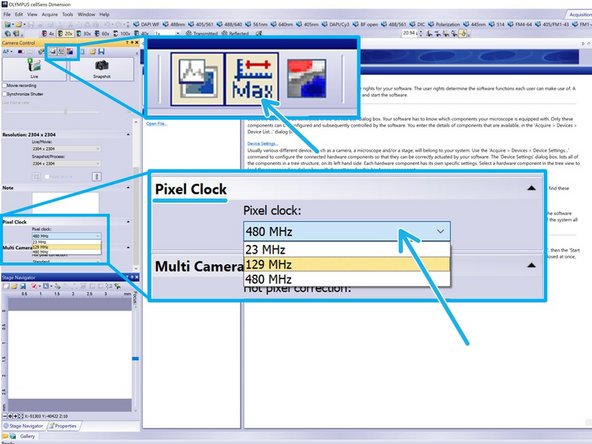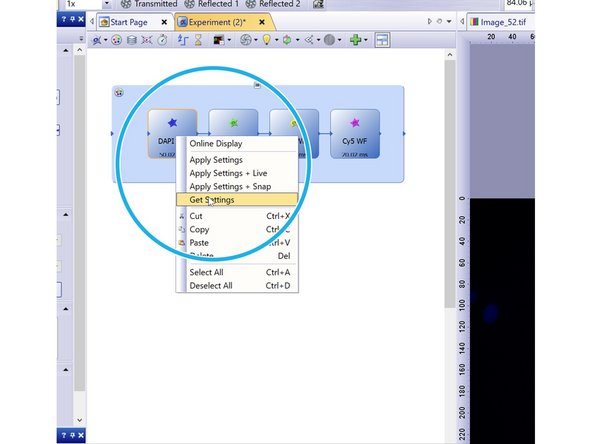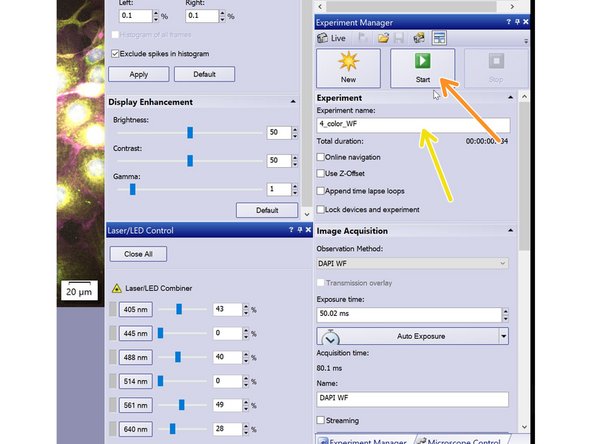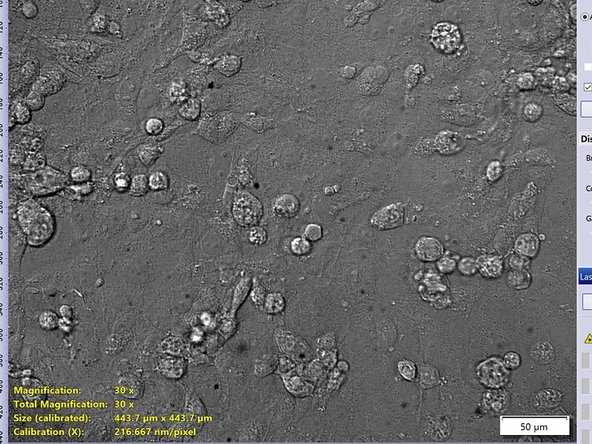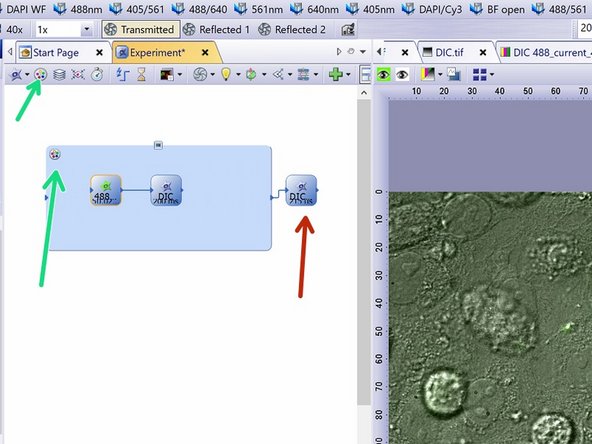-
-
Start a new Experiment on the "Experiment manager" tab.
-
Make sure the microscope is properly aligned and that you have checked your Koehler illumination.
-
Remove any lid you might have above your sample.
-
Add your observation method DIC to the experiment.
-
Do not forget to add an additional DIC_OUT observation method at the end to remove the extra components.
-
An extra DIC_OUT image will be generated, you can delete or ignore it. For more info please contact the ZMB staff.
-
You can find also find DIC and DIC_OUT observation methods under My functions - "ZMB DIC".
-
-
-
Double click on the observation method box to activate it.
-
Check the "Synchronize Shutter" box option if you would like to minimize exposure of your sample to light.
-
Press Live.
-
Adjust exposure time accordingly.
-
Under the "Microscope Control tab" your will find the two DIC Polarizers:
-
Scroll down until you find IX3 DIC slider.
-
Here you can adjust the orientation of the polarizer.
-
-
-
Make sure your image is not saturated with the help of the Adjust Display pannel.
-
The Camera can be run at 8 bit, 12 bit as well as 16 bit (recommended).
-
Here you can toggle the camera bit-depth between 16, and 8-bit and adjust the pixel clock (camera read out speed).
-
If you are acquiring at 8 bit the histogram max should be lower than 255, at 12 bit lower than 4095, while if you are using 16 bit the max should be lower than 65535.
-
For more details refer to the different camera modes here: Olympus Spinning Disk - 2: Multichannel + Z-stack acquisition.
-
-
-
Once you are satisfied with your settings right click on the observation method and select "Get settings".
-
Repeat the procedure for the remaining observation methods.
-
Name your experiment.
-
Press Start.
-
Visualize your image
-
-
-
If you want to acquire fluorescence + DIC images, make sure you remove DIC components from the light path after the DIC image and before acquiring the next fluorescent image, time point, position etc.
-
Remove DIC components by adding a DIC_OUT observation method.
-
An extra DIC out image will be generated, you can delete or ignore it. For more info please contact the ZMB staff.
-
Use the multicolor option to overlay the two channels.
-
The 2 channels should have the same bit depth, size and format.
-
Almost done!
Finish Line






